Posted on 07th August 2024 by Media Relations
A world-first research program aiming to conserve the iconic Platypus is now underway on Dundullimal Tubba-Gah Wiradjuri Country at Taronga Western Plains Zoo in Dubbo, Australia.
The multi-year project is a collaboration between Taronga Conservation Society Australia, which operates Taronga Western Plains Zoo Dubbo and Taronga Zoo Sydney, San Diego Zoo Wildlife Alliance and the University of NSW (UNSW).
In consultation with First Nations communities, a team of scientists seeking to learn more about these unique egg-laying mammals has launched the first-of-its-kind research program to improve conservation of the species – before it’s too late.
Four new platypuses have joined Platypus Rescue HQ at Taronga Western Plains Zoo, providing a unique opportunity to study the species’ breeding behaviour and biology in a state-of-the-art setting where environmental parameters can be monitored and controlled.
Prior to their arrival, and as part of the Zoo’s NAIDOC Week celebrations, a Smoking Ceremony was performed by Traditional Owner, Tubba-Gah Maing Wiradjuri man Uncle Lewis Burns, to signify the connection of Wiradjuri Peoples to Country.
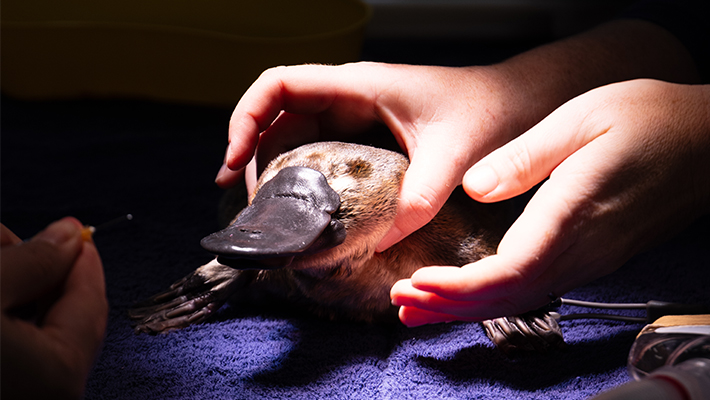
The research program, which combines ex-situ monitoring and wild population field work, aims to refine the conservation strategy for the Platypus by understanding how this vulnerable and elusive monotreme is responding to environmental stressors like climate change, and identifying interventions required to protect the animal’s future.
“The Platypus is such a loved and iconic Australian animal, but there is still so much we need to learn about them if we want to help them thrive into the future,” said Program co-leader, Wildlife Conservation Officer, Dr Phoebe Meagher.
“Understanding the key factors leading to reproductive success and how platypus respond to extreme climatic events like severe drought are crucial knowledge gaps we plan to fill.
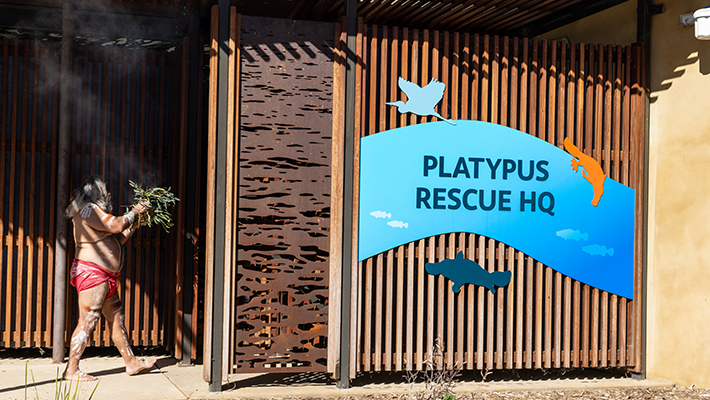
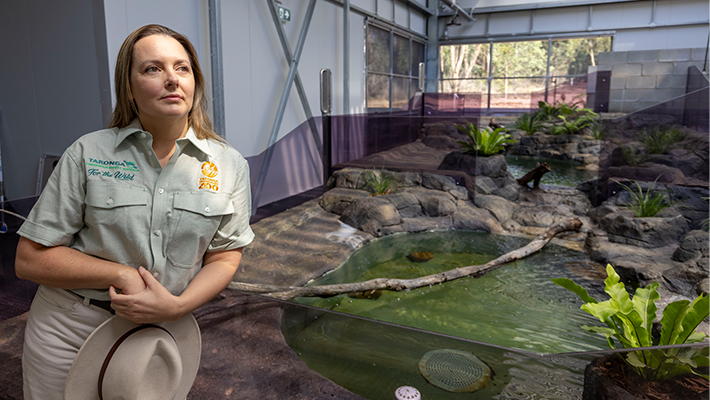
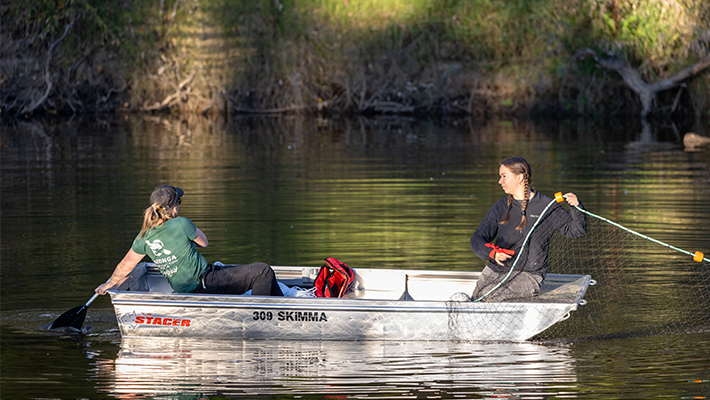
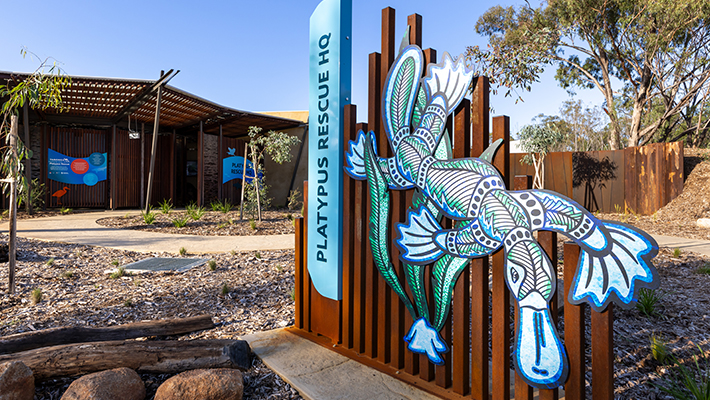
“Taronga’s ongoing consultation with Traditional Custodians and local Knowledge Holders is building strong connections and trust between Taronga across our two zoos, our partners and Indigenous peoples in caring for Country.”
During the last significant drought in 2019, Taronga and UNSW led a successful emergency rescue of platypuses. With a 21% overall decline in the species’ geographic range and a further 40% anticipated decline over the next 50 years, this event highlighted the urgent need for more research on climate impacts and triggers for wild interventions.
In February 2024, Taronga opened Platypus Rescue HQ, thanks to funding from the NSW Government, philanthropic donors and WIRES. This facility is the world’s largest dedicated conservation centre for platypus, with the capacity to house up to 65 platypuses at once in times of extreme weather events, and encompasses areas for refuge, research and recovery.
“We hope that the refuge area inside Platypus Rescue HQ never needs to be used, but with increasing impacts of climate change and extreme weather we now have the capacity to undertake emergency rescue interventions,” said Taronga Cultural Programs Coordinator Kirsty Hargraves.
“This is important for Indigenous Communities, their ancestral connection to Country and to ensure connection to cultural identity for future generations. These animals are crucial to our heritage and the Wiradjuri story. They are our ancestors and if we look after our ancestors, we’ll always look after Country.
“The Smoking Ceremony was also Ngunggiyarra, to make a promise to the ancestor being, Platypus and to foster good intention moving forward, promoting partnerships and pathways for First Nations peoples and communities to be able to continue to practice Country through Taronga Western Plains Zoo conservation projects.”
Equipped with independent stream systems, waterfalls, and plenty of space to dig cozy burrows, Platypus Rescue HQ’s purpose-built research facility is designed to mimic the wild and allow researchers to monitor the platypuses in the most natural setting possible.
After completing quarantine and passing their health checks with flying colours, the four new platypuses will make up the first breeding population at Platypus Rescue HQ.
By using this facility in combination with wild population monitoring, scientists believe they will be best prepared to inform Taronga’s future emergency response strategies, and develop a genome resource bank and genetics database to better understand and protect wild platypus populations.
Crucially, the program aims to crack the code on platypus breeding, with only 23 puggles produced in zoos since 1943, and many of the physiological, behavioural, and environmental factors that lead to reproductive success or failure remaining unknown.
“In 2019-2020, we saw just how vulnerable platypus are to prolonged drought, megafires and floods, which are only going to become more common as a result of a changing climate,” said Taronga and UNSW research associate Dr Tahneal Hawke.
“This project will also monitor wild platypus populations over a range of environmental conditions, improving understanding of when interventions might be necessary and the species’ breeding requirements.
“This project is really exciting because now, in collaboration with our partners, we have a unique opportunity to work out what we can actually do about it, and how we can improve the future for Platypus.”
“Platypuses play a crucial role in maintaining the health of their native watersheds and uniquely contribute to our planet’s biodiversity,” said Dr Hendrik Nollens, vice president of Wildlife Health with San Diego Zoo Wildlife Alliance.
“Their charismatic nature makes them influential ambassadors for wildlife, which faces urgent threats from climate change.
“Partnerships like these unlock opportunities that wouldn't be possible otherwise, enabling us to share knowledge and expertise. Together, we strive towards the same overarching goals—advancing conservation efforts to ensure a brighter future for the platypus."
About Taronga Conservation Society Australia
Taronga Conservation Society Australia is a leader in the fields of conservation, research, animal welfare, wildlife rehabilitation and environmental education. Taronga is a not-for-profit organisation with a commitment to conservation and securing a shared future for wildlife and people.
Taronga’s staff, scientists and researchers are experts in their fields. They work in partnerships with governments, universities, First Nations groups and other conservation organisations across the globe to support dozens of science, research and conservation projects and programs across Australia and around the world.
Taronga is a leader in Platypus conservation and in 2023 was part of a team that translocated 10 Platypus into the Royal National Park to re-establish a previously locally extinct population. Taronga also co-led an emergency translocation of 7 Platypus from Tidbinbilla Nature Reserve during the mega-fires of 2019/20. In 2024, Platypus Rescue HQ was opened at Taronga Western Plains Zoo in Dubbo, further cementing Taronga as a global leader in Platypus conservation.
About San Diego Zoo Wildlife Alliance
San Diego Zoo Wildlife Alliance, a nonprofit conservation leader, inspires passion for nature and collaboration for a healthier world. The Alliance supports innovative conservation science through global partnerships. Through wildlife care, science expertise and collaboration, more than 44 endangered species have been reintroduced to native habitats. Annually, the Alliance reaches over 1 billion people, in person at the San Diego Zoo and San Diego Zoo Safari Park, and virtually in 150 countries through media channels, including San Diego Zoo Wildlife Explorers television programming in children’s hospitals in 14 countries. Wildlife Allies—members, donors and guests—make success possible.
About Platypus
The Platypus is the animal emblem of Taronga Conservation Society Australia and the state of NSW. It has swum the fresh waters of eastern Australia and Tasmania for thousands of years, but remains a secretive and elusive creature.
The amphibious Platypus is a monotreme and one of the most unusual creatures on Earth. Monotremes are a unique group of mammals that lay soft-shelled eggs. The only other monotremes are the echidnas.
Monotremes are considered to be the most primitive of all mammals and were present in Australia when it was still part of the supercontinent, Gondwana (up to about 167 million years ago).
The oldest discovered fossil of the modern platypus dates back to about 100,000 years ago, but a species related to the Platypus, Steropodon galmani, was discovered in Lightning Ridge, NSW in the form of a jaw fragment; the fossil is thought to be 110 million years old and represents one of Australia's oldest mammals.
Platypus are highly specialised mammals with complex adaptations to water life. Their bills are complex sensory organs bolstered with electrical receptors that detect weak electrical fields generated by muscle activity in their prey, including crustaceans.